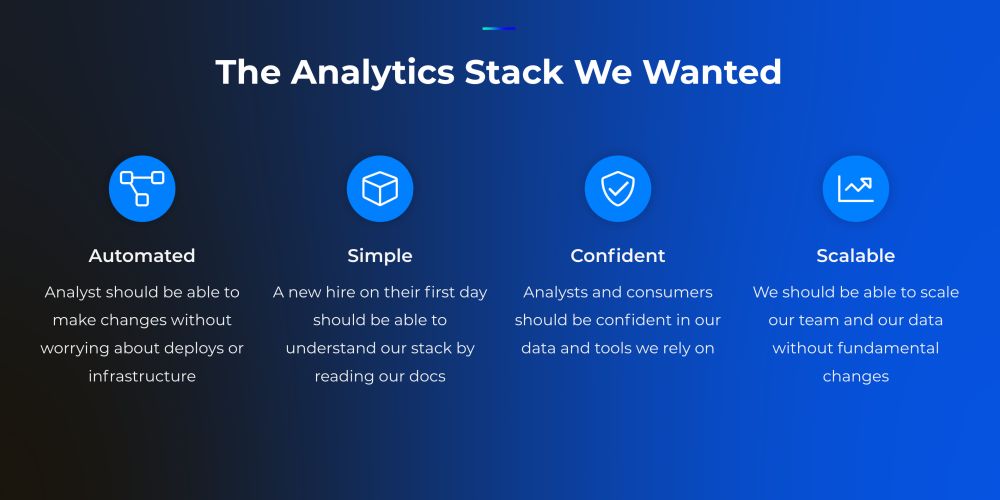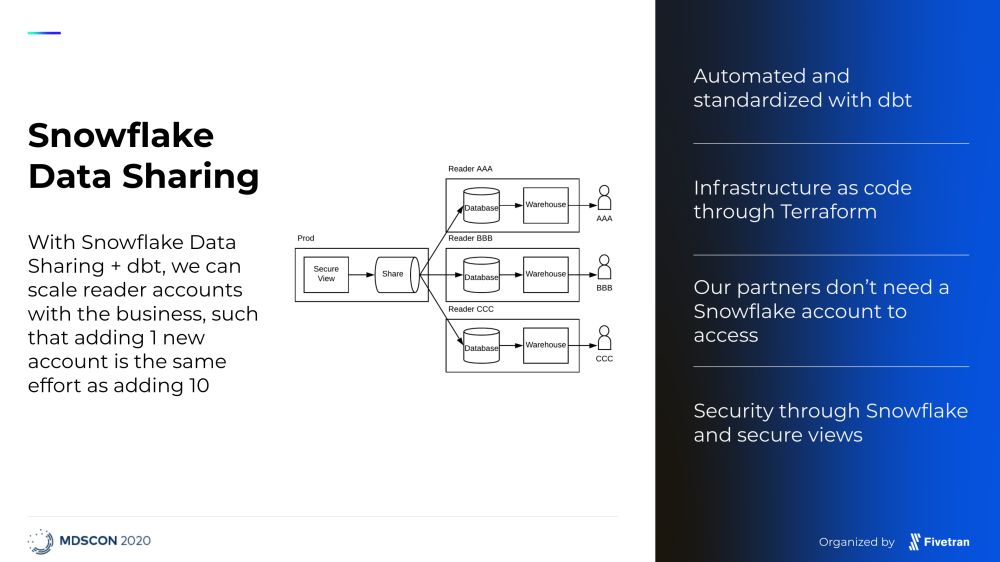Drizly is the world’s largest online alcohol marketplace. From the company’s website and app, users can order their favorite beers, wines and liquors from local retailers, and have them delivered in less than an hour.
In May 2019, when the company’s analytics team began updating its patchwork data infrastructure to a cloud-native modern data stack, they had no idea that within a year, a once-in-a-century pandemic would cause a massive surge in online alcohol sales. Back then, they just knew they needed an organized, reliable data infrastructure that would scale with the company without needing to engineer and maintain the solution continually.
Because of the team’s proactive efforts in adopting a modern data stack, the company is able to:
- Provide business users with better data-driven insights to meet logistical demand during rapidly-scaling order activity
- Share data with subject matter experts to quicken decision-making across marketing, partnerships and more
- Free up analysts to work on higher-level activities, such as enhancing data models
- Onboard new analysts quickly using best-of-breed tools across the data stack
How did the technology stack enable the data team to do all this? Let’s dig in:
Meeting business needs during a ~400% surge in business
Fast forward to 2020, and the firm foundation the team set in place enabled them to easily handle an influx of new customers and a flood of data as sales skyrocketed 392%—all while their growing team was working from home.
“We were able to just keep going, and we were in a position where we could answer questions for the business that didn’t exist before COVID,” said Dennis Hume, staff data engineer at Drizly. “There’s been a lot of new work that needs to be done, and we were lucky we didn’t have to spend this summer rebuilding everything, since we invested so much in the previous months going into this.”
“Besides the fact that I’ve been cutting my own hair for the past six months,” he joked, “it’s been a pretty uneventful summer for analytics.” Here are a few key insights Drizly shared at Modern Data Stack Conference 2020.
Anticipate dramatic scale when building your foundation
When the team looked at their existing data stack in 2019, said Emily Hawkins, Drizly’s analytics data infrastructure lead, “we really knew that we needed to upgrade our tools to build the analytics team that all of us wanted to work on.”

Their previous Redshift/Domo setup included datasets marked “do not use” or “work in progress,” so it was hard for analysts to tell what was accurate. There were no automated deploys and no real data testing, and logic was scattered across the data stack.
Using a phased approach, Drizly built a modern data stack powered by Snowflake, Fivetran and Looker with dbt as the transformation layer. Now, logic exists in a single place, peripheral chron jobs and tasks have fallen away and the team funnels its processes through a standard framework and shared workflows.
That reliability became crucial in the spring of 2020, when the spike in demand hit, they said. Drizly’s number of clickstream events per day went from 2 million to 20 million virtually overnight—and their data stack handled it all, no sweat. That’s a dramatic increase that only a cloud data solution can meet
Find best-of-breed modern data stack tools
Hawkins and Hume both emphasized the importance of finding tools that do just one thing spectacularly well, and then pairing them together. For example, they shared, their previous data stack relied on a BI tool, Domo, for data ingestion as well as BI, which it wasn’t really designed to do. The setup was a square peg in a round hole, and limited analysts’ options. With Snowflake serving as the data warehouse, dbt as the transformation tool and Looker as the business intelligence engine, the Drizly analyst team is ready to meet current and future needs with ease.

Ushering in a modern setup “began to allow analysts to think and work more like software engineers,” Hawkins said. With an automated, simple-to-use set up in place the team has been freed up to look ahead to important projects: for example, building up a data science team and enhancing the company’s data modeling strategy to better answer important business questions.
Plan to scale and grow in data maturity
Building a modern data stack that would scale as the company grew was a key concern from the start, they said. In practice, that has meant they can now easily onboard new analysts as their team has tripled. And they can easily share data with specialists and subject matter experts from across the company, delivering better insights to decision-makers in marketing or partnerships, for example.
Having one source of truth also means Drizly can also give its business customers easy access to the most updated analytics through reader accounts. “They’re seeing what we’re seeing, as soon as we transform the data,” Hume said.










